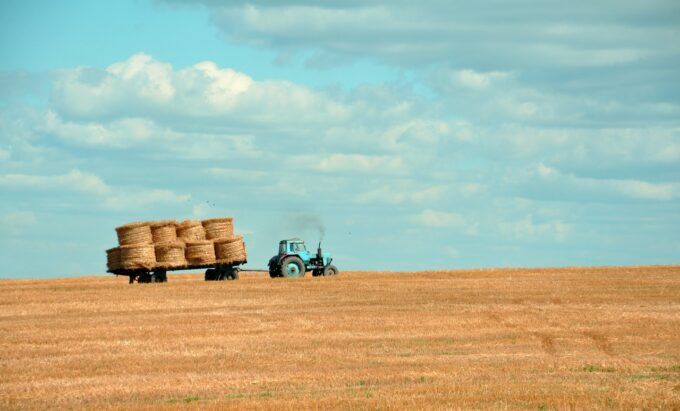Global farm productivity growth stalls, raising risks for food and markets – Virginia Tech News

Global Agricultural Productivity Report: An Analysis of Stagnation and its Impact on Sustainable Development Goals
Executive Summary
A report released by Virginia Tech’s College of Agriculture and Life Sciences indicates that innovation in global agriculture is critically lagging behind the demands of a growing population. This stagnation directly threatens the achievement of key Sustainable Development Goals (SDGs), particularly those related to hunger, poverty, and sustainable production. The Global Agricultural Productivity (GAP) Report identifies a significant shortfall in Total Factor Productivity (TFP) growth, an essential measure of agricultural efficiency. The current global TFP growth rate of 0.76% is less than half the 2% target required to sustainably meet global needs by 2050, jeopardizing progress on SDG 2 (Zero Hunger) and SDG 12 (Responsible Consumption and Production).
Analysis of Productivity Trends and SDG Implications
Total Factor Productivity Growth and its Link to Global Goals
Total Factor Productivity (TFP) measures the efficiency with which agricultural inputs like land, labor, and capital are converted into outputs. The decline in TFP growth presents a multi-faceted challenge to the global sustainability agenda. This slowdown directly impacts several SDGs:
- SDG 1 (No Poverty): Stagnating productivity threatens the economic viability and sustainable livelihoods of farmers worldwide.
- SDG 2 (Zero Hunger): Reduced efficiency gains strain the global supply of food and agricultural products, impacting availability and affordability.
- SDG 15 (Life on Land): Inefficient land use increases pressure on natural ecosystems and biodiversity as demand for agricultural land grows.
Regional Disparities and the Role of Innovation (SDG 9)
The report highlights significant regional differences in agricultural productivity, underscoring the importance of investment in innovation as outlined in SDG 9 (Industry, Innovation, and Infrastructure). A comparative analysis reveals a concerning trend for the United States, where agricultural productivity decreased by an average of 0.05% annually between 2011 and 2020. In contrast, China achieved a 1.9% annual growth rate, largely attributed to doubling its investment in agricultural research and development (R&D).
Strategic Frameworks for Achieving Sustainable Agricultural Growth
The TFP Growth Frontier Model
To address these challenges, the 2025 GAP Report introduces the Total Factor Productivity Growth Frontier model. This diagnostic tool is designed to identify specific barriers to productivity growth and map pathways for progress. By organizing technologies and practices into four domains, the model helps policymakers and investors pinpoint opportunities to advance sustainable agricultural systems in line with the SDGs.
Data-Driven Decision Making and Partnerships (SDG 17)
In alignment with SDG 17 (Partnerships for the Goals), the GAP Initiative emphasizes collaboration across public and private sectors. A key outcome of this approach is the development of GAP IQ, a data intelligence platform created in partnership with Google Public Sector and Appnovation. This AI-powered tool aims to:
- Integrate fragmented data on weather, crop yields, climate risk, and investment.
- Provide actionable insights for real-time decision-making.
- Model policy and investment scenarios to accelerate sustainable productivity growth.
- Support evidence-based strategies to achieve co-benefits for farm income (SDG 1, SDG 8), food security (SDG 2), and biodiversity (SDG 15).
Policy Recommendations to Realign U.S. Agriculture with SDG Targets
The report proposes four strategic priorities to reverse the decline in U.S. agricultural productivity and align its trajectory with global sustainability targets.
- Reignite Public R&D Investment: To advance SDG 9, a substantial increase in public agricultural R&D funding is necessary. This investment is the cornerstone for developing the next generation of innovations needed for sustainable productivity growth.
- Close the Adoption Chasm: Accelerating the adoption of existing productivity-enhancing and sustainable technologies is essential for progress on SDG 2 and SDG 12. This requires a revitalized knowledge and innovation system that supports farmers at all scales.
- Strengthen the Regulatory Environment: A modern, science-based regulatory framework is critical for reducing bottlenecks and ensuring the timely deployment of technologies that support sustainable agriculture, thereby fostering the innovation ecosystem envisioned in SDG 9.
- Foster Public-Private Collaboration: Embodying the principles of SDG 17, strong partnerships between public and private stakeholders are required to bridge the gap between research and widespread adoption, ensuring innovations are scaled effectively to support economic growth (SDG 8) and environmental protection (SDG 15).
Analysis of Sustainable Development Goals in the Article
1. Which SDGs are addressed or connected to the issues highlighted in the article?
- SDG 2: Zero Hunger – The article’s central theme is agricultural productivity to meet future demand for food and other agricultural products.
- SDG 8: Decent Work and Economic Growth – The report emphasizes the need for farmers to be profitable and make a sustainable living.
- SDG 9: Industry, Innovation, and Infrastructure – The article heavily focuses on the need for innovation, investment in research and development (R&D), and adoption of new technologies in the agricultural sector.
- SDG 12: Responsible Consumption and Production – The concept of Total Factor Productivity (TFP) directly relates to the efficient use of resources (land, labor, capital) in production.
- SDG 17: Partnerships for the Goals – The article explicitly details the importance of public-private partnerships and collaborations across various sectors to achieve agricultural goals.
2. What specific targets under those SDGs can be identified based on the article’s content?
-
SDG 2: Zero Hunger
- Target 2.3: By 2030, double the agricultural productivity and incomes of small-scale food producers. The article’s focus on increasing Total Factor Productivity (TFP) and ensuring farmers are profitable directly aligns with this target.
- Target 2.4: By 2030, ensure sustainable food production systems and implement resilient agricultural practices. The article discusses the need for sustainable productivity growth to protect environmental systems.
- Target 2.a: Increase investment, including through enhanced international cooperation, in rural infrastructure, agricultural research and extension services, technology development… The article urgently calls for a “step-change in public research spending” and specifically recommends increasing U.S. public agricultural R&D investment by $2.2 billion.
-
SDG 8: Decent Work and Economic Growth
- Target 8.2: Achieve higher levels of economic productivity through diversification, technological upgrading and innovation. The article’s entire premise is about breaking the “productivity plateau” through innovation, technology adoption (like GPS-enabled yield monitors), and R&D investment.
-
SDG 9: Industry, Innovation, and Infrastructure
- Target 9.5: Enhance scientific research, upgrade the technological capabilities of industrial sectors in all countries… encouraging innovation and substantially increasing the number of research and development workers and public and private research and development spending. The article directly addresses this by highlighting the decline in U.S. productivity growth due to underinvestment in R&D and advocating for reigniting public R&D spending.
-
SDG 12: Responsible Consumption and Production
- Target 12.2: By 2030, achieve the sustainable management and efficient use of natural resources. The article’s core metric, Total Factor Productivity (TFP), is defined as “an efficiency measure that tracks how effectively agricultural inputs such as land, labor, and capital are converted into outputs,” which is the essence of this target.
-
SDG 17: Partnerships for the Goals
- Target 17.17: Encourage and promote effective public, public-private and civil society partnerships. The article provides concrete examples of such partnerships, mentioning Virginia Tech’s collaboration with “large agribusinesses including Bayer, Corteva, Mosaic, Syngenta, and John Deere; research institutions such as Purdue University and the CGIAR System; and nongovernmental organizations such as The Nature Conservancy and Heifer International.”
3. Are there any indicators mentioned or implied in the article that can be used to measure progress towards the identified targets?
-
For SDG 2 (Zero Hunger)
- Indicator for Target 2.3: The article uses “Total Factor Productivity (TFP) growth” as its primary indicator. It provides specific data points: global TFP growth has dropped to 0.76% annually, while the target is 2%. It also notes U.S. agricultural productivity declined by an average of 0.05% annually between 2011-20.
- Indicator for Target 2.a: The level of “public agricultural R&D investment” is a key indicator. The article suggests a specific measure for progress: increasing this investment by “$2.2 billion” in the U.S.
-
For SDG 8 (Decent Work and Economic Growth)
- Indicator for Target 8.2: While not providing a specific number, the article implies that “farmer profitability” and ensuring farmers can make a “sustainable living” are key outcomes to be measured. The TFP growth rate itself serves as a direct indicator of productivity.
-
For SDG 9 (Industry, Innovation, and Infrastructure)
- Indicator for Target 9.5: The article uses “Public R&D spending” as a direct indicator. It compares the U.S. investment unfavorably to China, which has “double the research and development (R&D) investment of the United States.”
-
For SDG 12 (Responsible Consumption and Production)
- Indicator for Target 12.2: The TFP growth rate (0.76% annually) is a direct measure of the efficiency of resource use in agriculture, making it a relevant indicator.
-
For SDG 17 (Partnerships for the Goals)
- Indicator for Target 17.17: The article provides qualitative evidence of partnerships by listing the specific public, private, and non-governmental organizations collaborating on the GAP Initiative. The existence and number of these “public-private partnerships” serve as an indicator.
4. Table of SDGs, Targets, and Indicators
| SDGs | Targets | Indicators Identified in the Article |
|---|---|---|
| SDG 2: Zero Hunger | 2.3: Double agricultural productivity 2.a: Increase investment in agricultural research |
Total Factor Productivity (TFP) growth rate (current global rate is 0.76% vs. 2% target). Amount of public agricultural R&D investment (e.g., proposed $2.2 billion increase in the U.S.). |
| SDG 8: Decent Work and Economic Growth | 8.2: Achieve higher levels of economic productivity through innovation | Farmer profitability and ability to make a “sustainable living.” Rate of adoption of new technologies (e.g., GPS-enabled yield monitors). |
| SDG 9: Industry, Innovation, and Infrastructure | 9.5: Enhance scientific research and increase R&D spending | Level of public and private R&D spending (e.g., China’s investment is double that of the U.S.). |
| SDG 12: Responsible Consumption and Production | 12.2: Achieve sustainable management and efficient use of natural resources | Total Factor Productivity (TFP) as a measure of the efficiency of agricultural inputs (land, labor, capital). |
| SDG 17: Partnerships for the Goals | 17.17: Encourage and promote effective public, public-private and civil society partnerships | The existence and description of collaborations between universities (Virginia Tech), private companies (Bayer, John Deere), research institutions (CGIAR), and NGOs (The Nature Conservancy). |
Source: news.vt.edu

What is Your Reaction?
 Like
0
Like
0
 Dislike
0
Dislike
0
 Love
0
Love
0
 Funny
0
Funny
0
 Angry
0
Angry
0
 Sad
0
Sad
0
 Wow
0
Wow
0
















































/environment-climate-change-and-health-(ech)/water-sanitation-hygiene-and-health-(wsh)/landfill-tuvalu-36092.tmb-1200v.jpg?sfvrsn=5c21fe40_1#)

.jpg.webp?itok=0ZsAnae9#)























